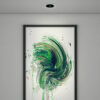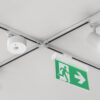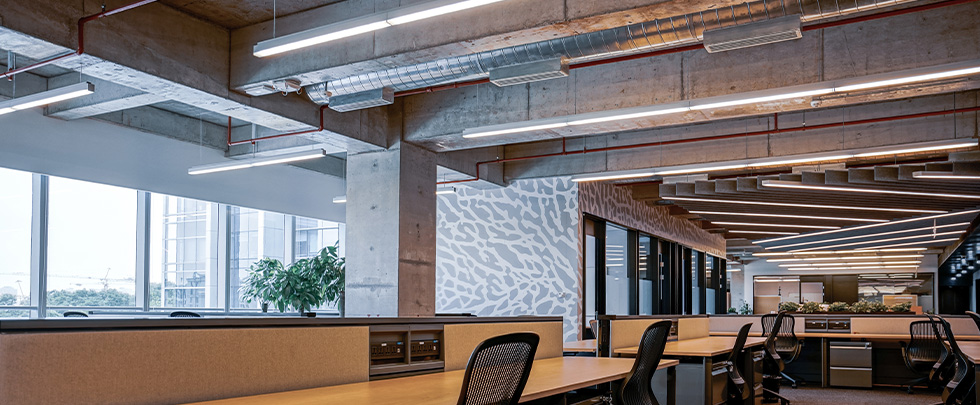
What is DALI?
Lighting control has come a long way from simple switches and timers. DALI (Digital Addressable Lighting Interface) is a modern, digital solution for smarter lighting management across commercial and industrial settings that adapts effortlessly to a variety of installations across single sites or extensive networks. Recognised globally under the IEC 62386 standard, DALI is now also adopted by Standards Australia for use throughout Australia and New Zealand.
An open standard
As an open standard, DALI allows manufacturers worldwide to produce compatible devices that operate seamlessly within a DALI system. This interoperability means electricians and installers aren’t locked into one manufacturer’s products, offering flexibility, choice, and future-proofing for any lighting installation.
How does DALI work?
DALI uses a digital system rather than traditional analogue signals, which means better reliability and clearer communication. Its wiring can be installed alongside mains power, simplifying the installation process. Additionally, DALI facilitates two-way communication—lights, emergency fittings, and sensors not only receive commands but can also report status and alert to faults automatically.
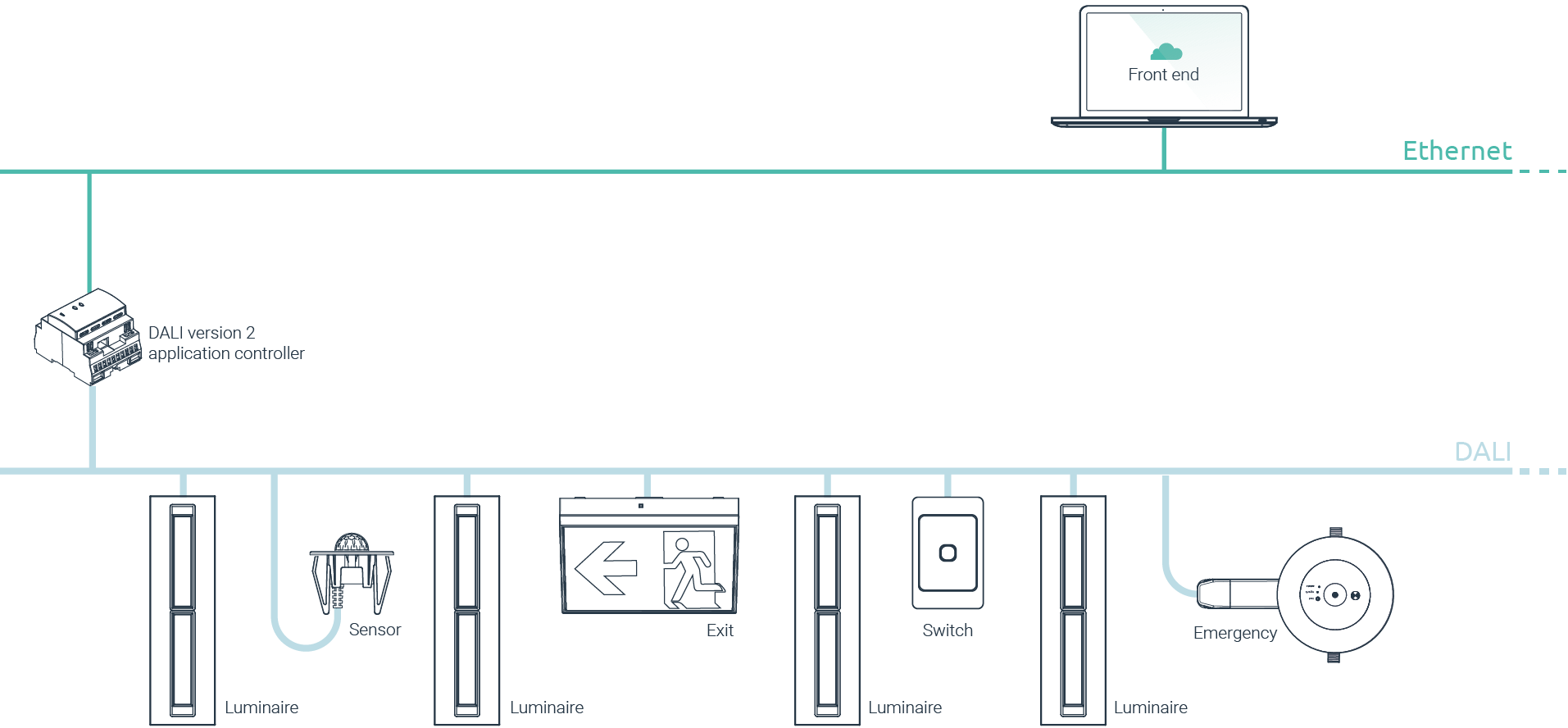
The illustration shows how luminaires, sensors, switches, emergency fittings, and exit signs connect to a DALI controller via a two-wire bus. The controller communicates with a frontend interface over Ethernet.
Each DALI device can be addressed individually, making it simple to control, program, and group lighting without physically rewiring. This makes commissioning and future modifications faster, simpler, and cost-effective. Devices can also store pre-set “scenes,” allowing tailored lighting conditions to be quickly activated, enhancing both functionality and user comfort.
Emergency lighting and DALI-2
DALI-2, the latest version of the standard, brought significant enhancements, especially for emergency lighting systems. Compliant emergency lighting can automatically conduct regular self-tests, checking the health of lamps and batteries, simplifying compliance procedures and improving overall safety.
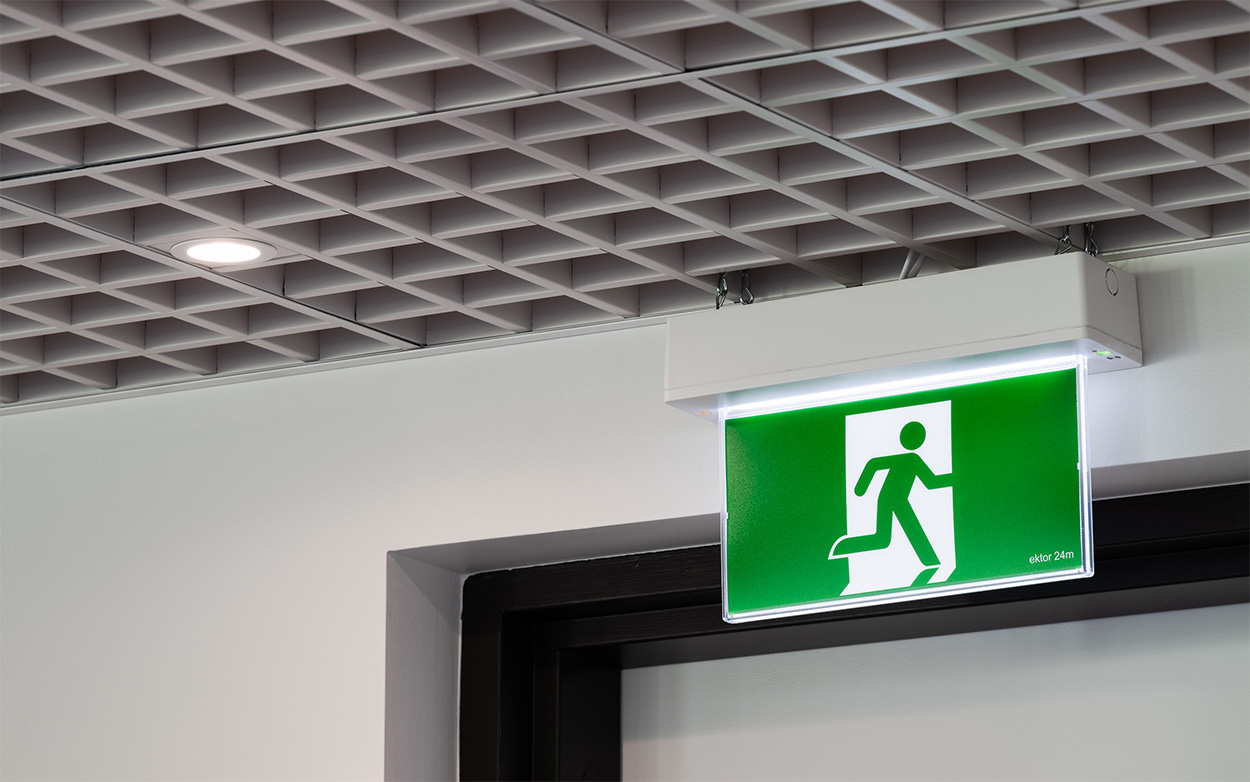
Moreover, emergency lighting can now be included on the main DALI circuit, which greatly simplifies the system and allows emergency lighting to activate automatically if regular lighting fails, ensuring continuous, safe illumination.
Getting started with DALI
A standard DALI system consists of:
- DALI-compatible luminaires or ballasts
- A DALI controller
- A DALI power supply
Wiring is straightforward and can be safely installed alongside mains power cables. Each network can accommodate up to 64 devices, and additional devices can easily be incorporated with minimal adjustments. Controllers range from a simple sensor or switch to sophisticated application controllers that are often integrated into building management systems.
Why choose DALI?
The international lighting community continually enhances DALI, ensuring it remains reliable and effective for modern lighting needs. Its widespread adoption, open nature, and ease of use make DALI a robust choice for efficient lighting management across a variety of building types.
Learn more about the DALI standard on the DALI Alliance website.
Read more on DALI systems and applications at zencontrol.
Explore our range
Looking to implement DALI in your next project? Explore the full range of Ektor LED lighting and emergency products, including DALI-compatible fittings, troffers, downlights and emergency exits.
Share the article
Resources
Check out more information about Ektor’s quality components.



